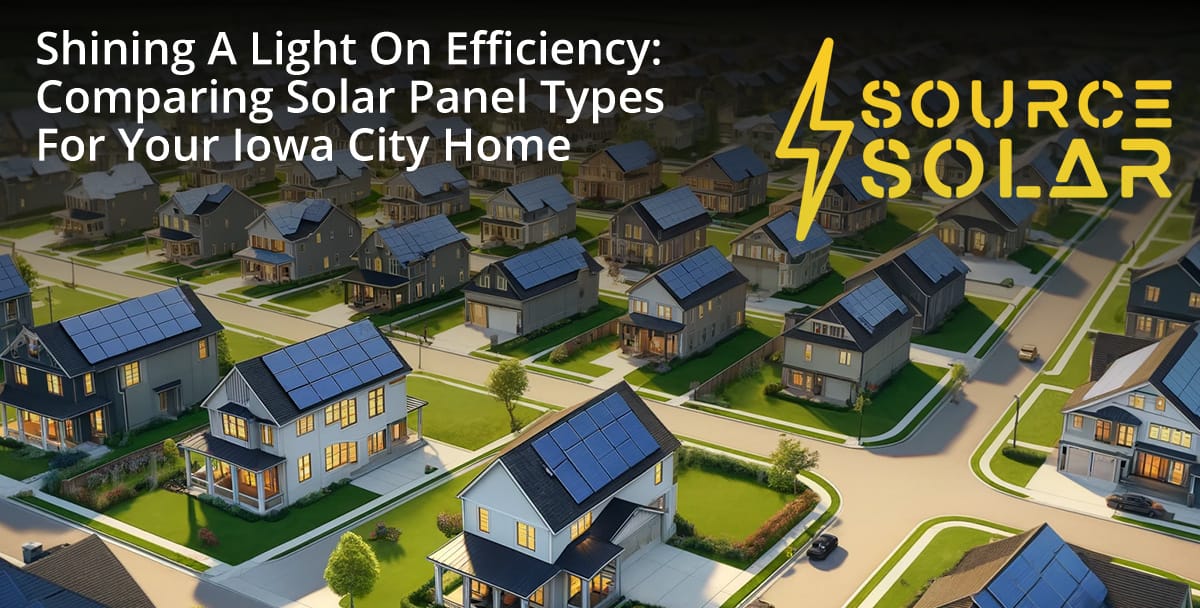The Revolutionary World of Residential Solar Panels
As Source Solar, a top-rated solar company in Iowa City, IA, we live and breathe solar technology. Being on the frontline of renewable energy, we understand the ins and outs of residential solar panels more than anyone else. The way we see it, the elegance in residential solar panels lies in their sophistication, an intriguing blend of physics, engineering, and pure sunlight.
In-depth Science in Residential Solar Panels
Residential solar panels, a common sight on rooftops across Iowa and an emblem of green energy, have a fascinating science behind their functioning. In simple terms, these panels convert sunlight—a form of energy called photons—into electricity. They achieve this conversion using a principle known as the photovoltaic effect. But, of course, it’s not as simple as it sounds.
Residential solar panels contain several small cells made of semiconducting material, most commonly silicon. When photons from sunlight hit the panel’s surface, they knock loose electrons from the semiconductors. This electron movement creates an electric current that can be captured and converted to standard AC power.
The Efficiency of Solar Panel Technology
When it comes to power generation, efficiency is a key factor. Residential solar panels use mono-crystalline or poly-crystalline silicon solar cells, with the former known to yield a slightly higher efficiency. The purity of the silicon used in mono-crystalline cells results in a more streamlined movement of electrons, thereby minimizing energy loss and optimizing efficiency.
However, it’s not entirely about the efficiency of the solar cells themselves; the inverter plays a significant role as well. Modern solar inverters can convert DC power to usable AC power with over 97% efficiency. This impressive number is a testament to the advanced engineering that characterizes today’s residential solar panels.
The Leaps in Solar Panel Innovation
The pursuit of efficiency has brought about significant innovations in the solar panel industry. One such development is the advent of bifacial solar panels. Unlike traditional designs that only capture sunlight from the top surface, bifacial panels utilize both sides to absorb photons, significantly increasing the energy yield.
Another promising development in residential solar panels is the incorporation of smart microinverters in each solar module. These intelligent devices allow each panel to function independently, thereby ensuring that the entire system isn’t affected by a single underperforming panel. This concept, combined with real-time monitoring, results in an extremely resilient solar system that can deliver optimal performance on a consistent basis.
Integration with Energy Storage Systems
The sophistication of residential solar panels is best seen in their perfect integration with battery storage systems. Combined with an energy storage system, solar panels can deliver power around the clock, regardless of whether the sun is shining or not. The rise of advanced lithium-ion batteries has made it possible for homeowners to harness more solar energy, enjoy greater energy autonomy, and lower dependency on grid electricity.
The Environmental Impact of Residential Solar Panels
Beyond the cutting-edge technology and energy efficiency, residential solar panels have positive environmental implications. Unlike traditional energy sources that release greenhouse gases, solar energy production is clean and offers a viable solution to combat global warming. As such, the technology behind residential solar panels does more than power homes—it holds the potential to create a sustainable future for us all.
Concluding Thoughts
At Source Solar, we believe that the beauty of residential solar panels lies as much in their technological sophistication as in their potential to reshape our homes, cities, and planet. Every day, we channel our passion, knowledge, and experience into making solar energy a viable reality for homeowners in Iowa and beyond.
Indeed, the technology behind residential solar panels may seem intricate on the surface, but its essence is simple and incredible: transforming sunlight into electricity, extending opportunities for energy independence, and making a positive environmental impact. As the latest advances continue to propel the efficiency and effectiveness of solar panels, the role of this remarkable technology in our lives can only grow.









